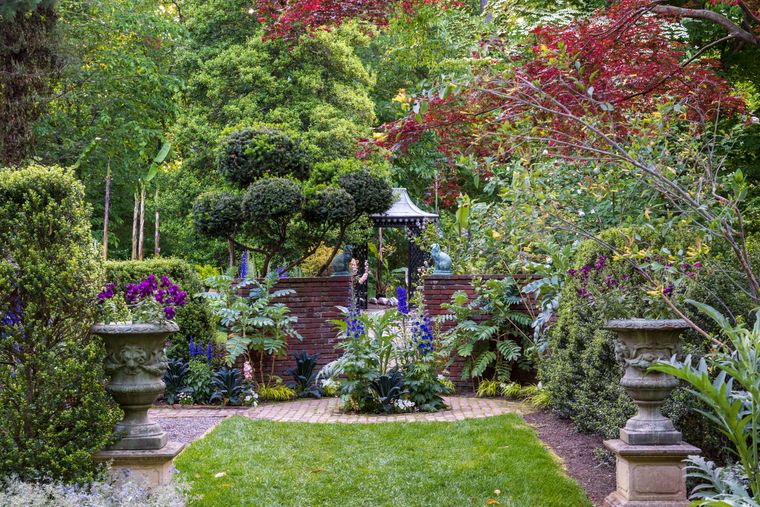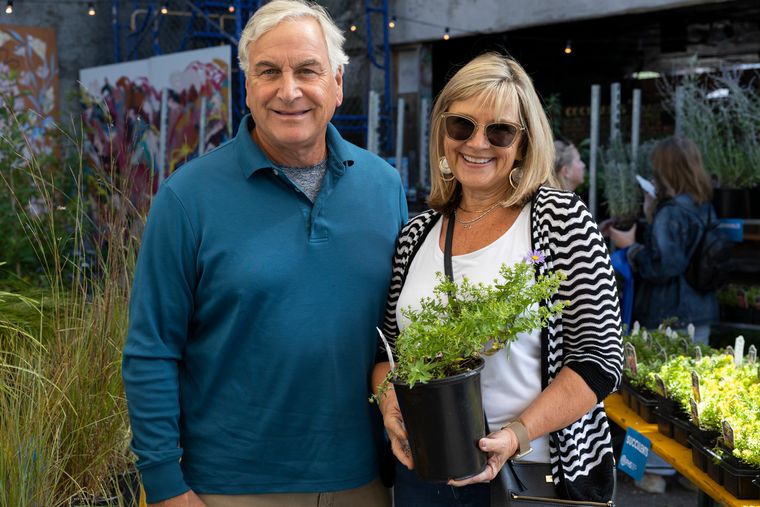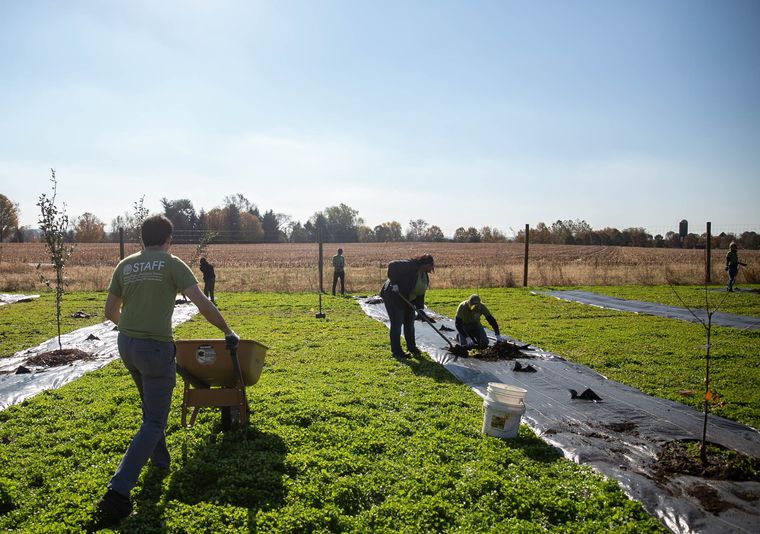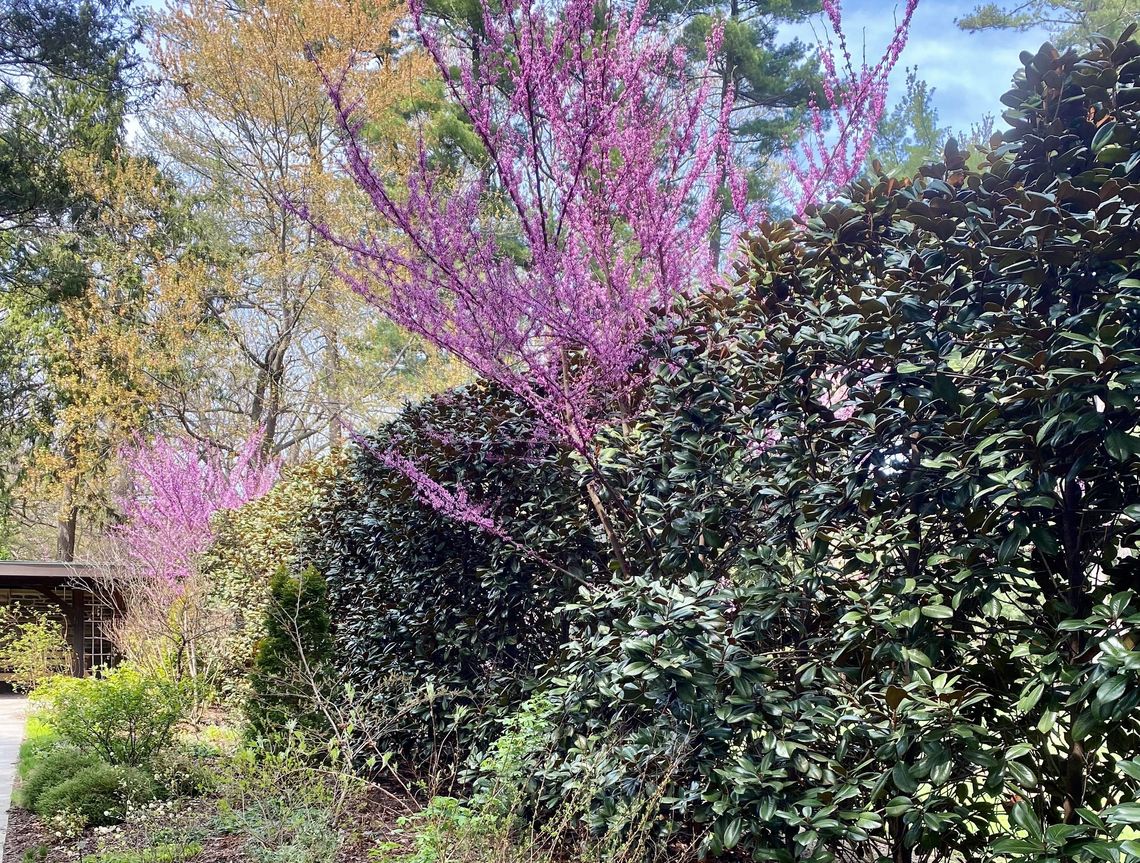



Transform Your Garden with a Living Fence: Creative Pruning and Plant-Based Structures
sustainable gardening
gardening projects

By Andrew Bunting, PHS VP of Horticulture
Hedges and living fences have been a staple in gardens around the world for decades. Whether you’re looking to define your property, add privacy, or create intimate outdoor “garden rooms,” a living fence can offer a stunning, sustainable solution. These plant-based barriers not only serve practical functions but also contribute to the garden’s ecological health by supporting biodiversity and offering vital habitat for wildlife.
What Is a Living Fence and Why Is It Beneficial?
A living fence is created by planting trees or shrubs closely together to form a dense, green barrier. With regular pruning, these plants grow into a cohesive structure that reads as one natural unit in the landscape. While traditional fences may be the go-to for privacy or security, a living privacy fence can offer the same benefits with added aesthetic and environmental value.
For safety concerns, such as around pools, traditional fencing may be necessary. However, hedges are often planted in front of fences to soften their appearance and blend them into the garden design.
Join our community and sign up for expert-led Know to Grow webinars. From backyard beginners to seasoned growers, there’s something for everyone!
Design Ideas for Using Living Fences to Create Garden Spaces
Living fences are powerful tools in garden design. Low hedges can structure vegetable gardens, dividing areas for specific crops, while taller hedges (four to six feet) enclose patios or seating areas, offering privacy and a cozy feel.
They also serve as elegant backdrops for ornamental trees and shrubs. For example, a grove of river birches, Betula nigra Heritage™, with their distinctive peeling white and pink bark is beautifully accentuated by a dark evergreen hedge behind it.
Living fences can also line walkways, guiding visitors through your garden and drawing the eye toward focal points like a decorative container, sculpture, or specimen tree. This kind of tree fence design adds both structure and style.

Choosing the Right Plants for a Living Fence
The success of a living privacy fence starts with the right plant selection. There is a wide range of plant types that can be effectively used for hedges. While many hedges are pruned regularly, this is not necessarily needed for all hedges. More naturalistic hedges that contain a mix of species are increasingly being planted as garden features that foster biodiversity and support wildlife.
For all privacy hedges, several PHS Gold Medal Plant awardees make outstanding choices while being beneficial to the environment:
- Thuja ‘Green Giant’ is a very fast-growing conifer and is one of the best evergreen trees for hedging. ‘Green Giant’ will benefit from pruning every 1-2 years.
- A selection of the Japanese red-cedar, Cryptomeria japonica ‘Yoshino’ is a more informal hedge. This is a tree that will not respond well to pruning but makes a tall hedge over time.
- Southern magnolias can be a very durable, large hedge in the landscape. ‘Bracken’s Brown Beauty’ has large, lustrous, evergreen leaves and is very tolerant of many conditions. Pruning needs to be done with hand pruners or a pole saw. It will not respond well to shearing.
- The native Juniperus virginiana Emerald Sentinel™ is an outstanding selection of the Eastern red-cedar. This dark green conifer produces an abundance of blue fruits that are a favorite of many native songbirds.
- The American holly, Ilex opaca ‘Satyr Hill’, is another excellent native tree for hedging. It, too, produces an abundance of fruits for native birds.
For smaller and intermediate-sized hedges, in addition to managing Thuja ‘Green Giant’ at a shorter height with regular pruning, there are several great plant options:
- Boxwood ‘Green Velvet’, another PHS Gold Medal recipient, remains a popular traditional hedge but should be used cautiously due to susceptibility to Boxwood Blight.
- Native inkberry holly, Ilex glabra Strongbox® is a reliable native alternative to boxwood with good disease resistance and dense, evergreen growth.
- Osmanthus species, including ‘Goshiki’ and ‘Gulftide’, provide attractive foliage and fragrant blooms, forming intermediate hedges up to ten feet tall.
Mixed native hedges are growing in popularity as a way to create dynamic, ecologically rich living fences. These loose, layered plantings can be left informal or lightly hand-pruned to maintain a desired form. Excellent species for mixed hedges include:
- Hornbeam, Carpinus caroliniana
- Chokeberry, Aronia arbutifolia ‘Brilliantissima’
- Arrowwood viburnum, Viburnum dentatum
- Winterberry holly, Ilex verticillata
- Spicebush, Lindera benzoin
At Stoneleigh, a public garden near Philadelphia, a mixed hedge of native evergreen and deciduous shrubs enhances biodiversity and provides excellent nesting habitat for birds, showcasing one of the best living fence ideas for wildlife support.

Creative Pruning Techniques for Shaping Your Living Fence
Pruning plays a critical role in shaping and maintaining many types of living fences. It encourages dense growth, maintains form, and supports plant health. However, not all hedges require regular pruning, particularly informal or mixed native hedges, which are often designed to grow more naturally. These types of hedges can thrive with minimal intervention, benefiting wildlife and enhancing the garden's ecological value.
For hedges that do benefit from shaping, creative pruning techniques can add flair and structure:
- Espaliering: Training trees into flat, decorative shapes along a support.
- Topiary: Sculpting shrubs into ornamental shapes.
- Traditional hedging: Maintaining clean, geometric forms with regular trimming.
Tips for Maintenance
- Water consistently, especially during the first few years. Newly planted hedges need regular, deep watering to establish strong root systems. Use soaker hoses or drip irrigation to deliver moisture directly to the roots, and adjust frequency based on rainfall and temperature. Once established, many hedge species become more drought-tolerant but may still need watering during dry spells.
- Mulch around the base to retain moisture and suppress weeds. Apply a 2–3-inch layer of organic mulch, such as shredded bark or leaf mold, around the base of the plants. This helps conserve soil moisture, suppress weed growth, and moderate soil temperature. Be sure to keep mulch a few inches away from stems or trunks to prevent rot and discourage pests.
- Prune regularly, at least once or twice a year, to keep the desired shape and density. Regular pruning encourages fuller growth and helps maintain the size and form of your hedge. For formal hedges, prune in early spring and again in late summer. For informal or mixed-species hedges, light hand pruning once a year may be all that’s needed. Always use sharp, clean tools and avoid heavy pruning late in the growing season.

Common Challenges and How to Overcome Them
Time to establish: Living fences don’t form overnight. Most will take 2–5 years to fill in, depending on the plant species and spacing. Be patient and consistent with care.
Pests and diseases: Keep an eye out for issues like scale insects, fungal diseases, or leaf spot. Choose disease-resistant varieties and follow proper spacing to allow airflow.
Boxwood Blight is a major concern for traditional boxwoods like ‘Green Velvet’—causing leaf drop and dieback. In areas where it’s present, consider resistant alternatives like the native inkberry holly, Ilex glabra Strongbox®, which offers similar structure with better disease resistance.
Weather-related concerns:
- In cold climates, protect young plants from frost with burlap screens or windbreaks.
- During droughts, deep-water less frequently rather than shallow watering often.
Natural Barriers, Endless Possibilities
A living fence is more than just a beautiful alternative to a traditional fence—it’s a dynamic, eco-friendly way to define space, enhance privacy, and boost biodiversity in your garden. With the right plants and pruning techniques, your living fence can be a long-term asset to your landscape.
Ask PHS for more living fence ideas and pruning tips!


